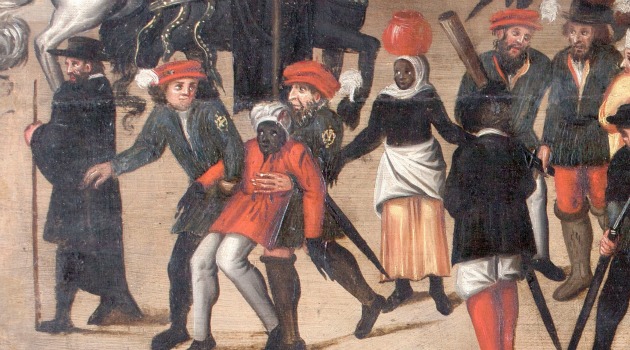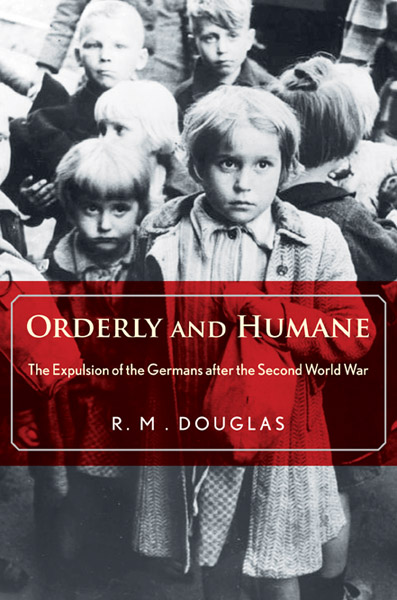O splendour of the flesh! O ideal splendour!
O love renewed, triumphant dawn aurora,
Where, at their feet the Gods and Heroes,
Callipyge the white and her little Eros,
Drowned in the snow of rose-petals, press
Women and flowers beneath their feet’s caress!
—Rimbaud
Since English roses are the Crown of the Evolution, that Nature took unfathomable ages to create, when I lived in Manchester nothing shocked me more than the spectacle of watching snow-white women with Neanderthalesque partners on the streets: dysgenics to the maximum degree.
Below, paragraphs from Arthur Kemp’s March of the Titans:
♣
The world today is dominated by technology as never before. It is impossible to travel anywhere without seeing some vestiges of or manifestations of technological wizardry which have shaped all life on the planet today, particularly those innovations developed at the time of the Industrial Revolution.
While this fact is commonly known and countless books and works have been written on the subject, all have ignored one crucial feature of this astonishing technological revolution: the plain facts are that the great technological innovations which have set the pace for the entire world are exclusively the product of a tiny minority of Whites.
This fact, like so many other unpalatable truths in history, is ignored because of the political implications it carries: it is possibly the most politically incorrect view which can be made, although the facts leave any objective observer with no other option but to arrive at this inescapable conclusion.
[Kemp goes on to explain the origins of technology and science. He sketches the lives of dozens of white inventors and scientists, a long list from the ancient Greeks to modern inventors: all whites. In other chapters he writes about immigration and eugenics in the US until 1945. He also writes about monstrous dysgenics: what I call the Sin against the Holy Ghost, non-white interbreeding with Aryan women:]
Having established itself as the second White heartland, a second Europe, North America immediately became the focus for massive development, advances—and a magnet for further immigration from all parts of the world. America’s rise to greatness depended to a great degree upon its large racial homogeneity.
Following the banning of further Black immigration in 1808 (when the further importation of slaves was outlawed) American immigration policy was specifically geared to ensuring that as few non-Whites as possible entered that country. As a result of this policy, the White population did indeed increase: great industries sprang up and America soon almost equaled Europe in terms of population numbers.
In the period immediately following the end of the American Civil War, the Republican Party dominated American politics, partly through the disenfranchisement of the Whites in the South and their replacement with Republican supporting Black voters. The Republicans remained in control of both houses of Congress until 1875, and of the presidency from 1869 until 1885, in the latter year losing it to the Democrats.
After 1900 the legislation enforcing segregation was carried to new heights:
• a 1914 Louisiana statute required separate entrances at circuses for Blacks and Whites;
• a 1915 Oklahoma law segregated telephone booths;
• a 1920 Mississippi law made it a crime to advocate or publish “arguments or suggestions in favor of social equality or of intermarriage between Whites and Negroes.”
• Arkansas provided for segregation at race tracks;
• Texas prohibited integrated boxing matches;
• All states had segregated schools; and
• All states prohibited mixed race marriages.
Segregation was not, as is commonly believed, restricted to the South. In 1910, the northern city of Baltimore in Maryland became the first city in America to officially delineate separate Black and White suburbs, and was followed by Dallas, Texas, Greensboro, North Carolina, Louisville, Kentucky, Norfolk, Virginia, Oklahoma City, Oklahoma, Richmond, Virginia, Roanoke, Virginia, and St. Louis, Missouri.
The policy of segregation was carried out at the highest level: when Woodrow Wilson became president in 1913, the first action he took upon arriving in Washington DC, was to order the segregation of all federal facilities in the American capital.
Eugenics
During the last part of the 19th Century and the early part of the 20th Century, America became the world’s center for racial science. By the time that Theodore Roosevelt became president of America in 1913, and lasting right until the beginning of the Second World War in 1939, explicitly racial policies were followed by virtually all American presidents.
When D.W. Griffith’s classic 1915 film, Birth of a Nation, which told the story of the Reconstruction period and the rise of the original Ku Klux Klan, was publicly praised by American president Woodrow Wilson, the film was an immediate hit, with audiences all over America flocking to see the epic.
Madison Grant
The chief racial theorist at the time in America was Madison Grant (1865-1937) who counted amongst his personal friends at least two American presidents. Grant wrote two of the most influential works of American racialism: The Passing of the Great Race (1916) and The Conquest of a Continent (1933). In both these books Grant expounded on racial anthropology and the need for eugenics—or racial improvement by selective breeding (in the same way that specific breeds of animals are reared).
In his book, The Passing of the Great Race, Grant called for a halt to non-White immigration into the United States. The book was an international best seller, being favorably reviewed by Science, the journal of the American Association for the Advancement of Science, and numerous other equally influential publications.
Lothrop Stoddard
American president Warren G. Harding publicly praised eugenicist Lothrop Stoddard’s book, The Rising Tide of Color, at a public speech on 26 October 1922; this was followed the same year by the appointment of one of Grant’s compatriots, Harry Laughlin, as an expert witness on eugenics and racial differences in IQ (as had been measured in the U.S. military) by the U.S. Congress Subcommittee on Immigration.
1924 Immigration Law
A huge wave of immigrants to the United States occurred between the 1840s and the 1920s. During this era, approximately 37 million immigrants arrived in the United States. Census figures indicate that about 6 million Germans, 4.5 million Irish, 4.75 million Italians, 4.2 million people from England, Scotland and Wales, approximately the same number from the Austro-Hungarian Empire, 2.3 million Scandinavians, and 3.3 million people from Russia and the Baltic states entered the United States. Between the 1840s and the 1870s, Germans and Irish groups predominated. Between 1854 and 1892, more Germans arrived in any given year than any other ethnic group, except for three years when the Irish predominated.
Starting in 1880 however, the waves of immigrants started to come increasingly from Eastern Europe: millions of Eastern European Jews and Southern Europeans, all considerably “darker” than the original White settlers in America who had all virtually exclusively come from the Nordic sub-racial dominated countries of Northern and Western Europe.
The influx of Southern Europeans, in particular, was opposed by the American eugenicists, and became the subject of much work and investigation. The end result of this work, combined with the earlier investigations and evidence by Harry Laughlin, produced the 1924 Immigration law. In 1924, the overwhelming majority of scientific opinion put before the Congress led to the Johnson Act of 1924, which cut down to little less than a tiny trickle the number of immigrants into America, limiting those who did enter to those of specific Northern and Western European ancestry only.
This law remained in force until 1965. Grant was acknowledged as the father of these immigration laws; and he went on to found the American Eugenics Society with Laughlin, the U.S. Congress appointed eugenics advisor.
The suppression of American eugenics
The science of eugenics became international: the First World Eugenics Congress was held in London in 1912. The later British prime minister, Winston Churchill, was one of the official sponsors, with the then British prime minister, Arthur Balfour, delivering the inaugural address.
The Second Eugenics Congress was hosted by the American Museum of Natural History in New York, with more than 300 delegates from all over the world—except Germany, as that country was still ostracized after the First World War. The guest list was impressive: including the future American President Herbert Hoover and the scientific genius Alexander Graham Bell, who was also the Congress’s honorary president, amongst many others.
The Third World Eugenics Congress—and the last—was held at the American Museum of Natural History in New York again in 1932, where prominent attendees included Dr. J. Harvey-Kellogg (from Kellogg’s cereals) and Leonard Darwin, son of Charles Darwin, the developer of the theory of evolution.
Grant’s second major work then appeared in 1933: The Conquest of a Continent, detailing the racial make-up of the United States and warning that racial integration would cause modern America to disappear. The book, published by the well-known Scribner and Sons publishing house, became the focus of a boycott organized mainly by the Jewish Anti-Defamation League.
This occurred despite Grant making no specific remarks about Jews in the book: but by this time the Nazi Party had come to power in Germany and the American racialist movement was to a large extent held responsible for helping to prepare the scientific background to Nazi policy, and as such the propaganda mills were turned against Grant as much as they were turned against the Nazis.
Finally the Jewish anthropologist, Franz Boas, launched an all out campaign against eugenics. Combined with the propaganda linking Grant’s work to the openly anti-Jewish Nazi government in Germany, fewer and fewer public figures were prepared to associate themselves with eugenics, and by the end of the Second World War the science had been successfully suppressed in America.
Non-white immigration into the white heartlands
The dominating theme of European history in the last quarter of the 20th Century has been the large-scale immigration of non-White peoples and races into the modern era White heartlands of Europe, Australia/New Zealand and North America. This process has taken place via two avenues: legal immigration and illegal immigration: it is difficult to formulate estimates on which has been the greater. Whatever the channel used, the reality of masses of non-Whites settling in these territories can quite rightly said to be changing the face of these continents.
According to Eurostat (the Statistical Office of the European Communities) in their publication Migration Statistics, 1996, there is not one of the 15 countries in Western Europe which, at the beginning of 1994, did not have less than 3 -10 per cent of what they euphemistically call “non-nationals resident”.
France, Germany, Austria, the Benelux countries, Denmark, Scandinavia and England are all listed as having “non-nationals resident” of more than 10 per cent, with Germany in two regions registered figures of “more than 15 per cent.” An average of between 10 and 15 per cent of “non nationals resident” in Western Europe as of the mid 1990’s is therefore an accurate estimate, given that official figures are always behind actual statistics, as the number of illegal immigrants always closely shadows the number of legal immigrants.
Racial mixing has been extremely prevalent in Britain. According to the 1991 census, taken by the Office for National Statistics in London (ONS), 40 per cent of young Black men in Britain are married to, or live with, a White partner. The trend is less common on the other side of the sexual divide, where one in five young Black women has a partner who is White. Britain has, as a result of this large non-White influx, suffered a large number of Black riots, the most serious of which occurred in 1981, when countrywide riots saw large areas of many inner cities razed to the ground.
According to an article in the newspaper, USA Today of 17 June 1998, the number of mixed-race marriages in the USA was 150,000 in 1960. By 1998 it had increased to “over 1.5 million” and it estimated that the number of mixed-race children in America stood at “over 2 million.”
The 1960s will also go down in history as having introduced one of the most significant factors to affect White numbers in the entire history of the world: the development of the birth control pill, or oral contraceptive, which was first approved for use in the United States in 1965. Social demographic trends have shown that it is only in the Western, White, industrialized countries where contraception is used to any significant degree.
The reproduction rate in White countries (amongst their native populations) has, since the introduction of the pill, dropped to the point where in most White countries it is below the stable replacement rate of 2.4 children per female. In the non-White Third World however, no such restraints exist, and the population grows exponentially as fast as the White population declines in Europe and North America: this demographic time bomb will in the not to distant future have serious consequences for the entire earth.
The resultant massive overpopulation of the non-White lands of the earth provides the major driver for non-White immigration into the White heartlands of Europe, Australia and North America.
____________________________
I blame Christianity’s secular offshoots for this, and look forward to participate in the Day of the Rope…













